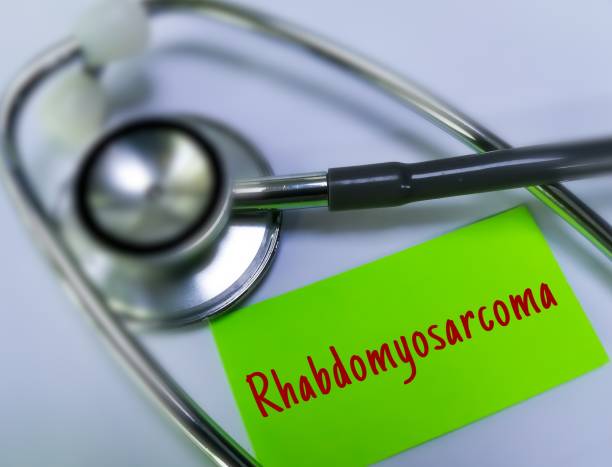What Is RMS Disease: Rhabdomyosarcoma, RMS Disease, which is also known as “Rhabdo” or RMS, is a type of cancerous tumor that forms in the soft tissues of the body, mainly the muscles. It can happen is different parts of the body like neck, vagina, head, arms, trunk, and legs. These are featured by fast-growing cells that has the power to spread to other body areas.
Rhabdomyosarcoma is a soft-tissue cancer type which is found in children. Whereas it can grow at any age, mainly affects kids between the age of 2-6 years and teenagers between 15-19 years. Boys are more likely to be impacted by this condition than girls.
The usual treatment of Rhadomyosarcoma (RMS Disease) involves a combination of surgery, chemotherapy, and radiation.
When RMS is detected and treated first, many children have a good chance to get recovered completely.
Rhabdomyosarcoma(RMS) is treated with chemotherapy, surgery, and radiation. When it is found and treated first on time, many kids can get fully recovered.
Types of Tumors
There are two main type of Rhabdomyosarcoma(RMS Disease) in kids are:
- Embryonal rhabdomyosarcoma (RMS Disease) : It is a tumor that usually appears in the neck and head region, urinary tract, and genitals. It mainly impacts children under the age of 6. Though it is fast growing type of tumor, many cases of embryonal RMS show a positive response to deep treatment. A risk to children may get good results with reduced therapy.
- Alveolar rhabdomyosarcoma (RMS Disease): It is another type of RMS Disease that is mainly seen during the teenage years. It mainly affects the legs, arms, abdomen, or chest. Alveolar RMS Disease is also fast-growing, but it poses more challenges in terms of treatment. Children with alveolar RMS need treatment and not categorised as low-risk cases.
What is the exact cause of rhabdomyosarcoma (RMS Disease)?
The main cause of RMS is not known yet but doctors have identified some medical conditions that can increase the likelihood of its development in some kids. These conditions include disorders like:
- Some medical conditions can include rhabdomyosarcoma (RMS Disease) growing chances. One is Li-Fraumeni syndrome, a genetic disorder which is very rare that enhances the risk of developing cancer during the life of the person.
- Another condition is neurofibromatosis, which causes tumors growth on nerve tissue.
- Beckwith-Wiedemann syndrome is a condition that person is born with (congenital), and it can become the reason of excessive growth in the body, which affects the internal organs too.
- Noonan syndrome and Costello syndrome are two conditions that can cause developmental delays, deformities, and other issues in affected person.
- DICER1 syndrome is a genetic disorder that affects multiple organs in the body. It is usually noticed when a person grow embryonal rhabdomyosarcoma (RMS) in the reproductive system.
What are the symptoms and signs of rhabdomyosarcoma (RMS Disease)?
The RMS symptoms vary depending on how and where big the tumor is. Sometimes, a child may notice a lump on their body, which could be accompanied by pain, usually by swelling.
In some other cases, the tumor might be deep inside the body, causing no noticeable or very few symptoms.
When rhabdomyosarcoma occurs in the head, it can cause headaches, a droopy eyelid, or bulging of an eye. If it affects the urinary system, it can lead to problems with bowel movements and urination, and there may be blood in the urine or stool.
If the tumor presses on a nerve, a child might experience weakness or tingling in that particular body area.
How to diagnose rhabdomyosarcoma (RMS Disease)?
When a doctor suspects that a child might have RMS Disease or any other soft-tissue tumor, they will perform a complete physical examination and request the given tests:
- Imaging studies. Imaging studies are essential to diagnose rhabdomyosarcoma (RMS). The doctor may request a MRI, CT scan, and possibly a bone scan, X-ray, PET scan, or ultrasound. These tests will help determine the location and size of the tumor and also check if cancer has spread to other parts of the body (metastasized).
- Biopsy. A biopsy is another important step in diagnosing rhabdomyosarcoma (RMS Disease). During a biopsy, the doctor takes a sample from a lump, sore, or tissue for a closer examination. This helps them confirm the diagnosis and decide on the most suitable treatment. In some cases, the tumor may be removed entirely if it is feasible to do so.
- Blood tests are conducted to gather vital information about the body’s functioning, specifically the liver and other organs, as well as to assess the body’s ability to handle and process chemotherapy. Tests like a complete blood count, liver function panel, and blood chemistries are commonly performed. If the doctor suspects that the tumor is linked to an underlying genetic condition, additional genetic tests may be conducted to investigate further.
- Bone marrow aspiration and biopsy involve taking a small sample of the spongy tissue inside the bones, called bone marrow. The sample is examined to check for cancer cells and understand the health of the blood cells being produced in the bone marrow.
How to treat Rhabdomyosarcoma (RMS Disease)?
Treatment for rhabdomyosarcoma (RMS) and other soft-tissue tumors vary depending on cancer’s stage. Staging helps doctors understand how far the cancer has progressed and if it has spread to other body areas.
Once the stage is determined, doctors can plan the most appropriate treatment for the specific case.
Staging considers important details such as the size of the tumor, how deeply it has affected an organ, where it started in the body, and if it has spread to other organs.
For rhabdomyosarcoma (RMS Disease), the location of the original tumor provides crucial information about how the tumor will behave and guide the treatment plan.
When making treatment plans, Doctors consider other factors like the type of tumor, the age of child, and overall health. The treatment options can include a combination of the following or just one of them:
- Surgery. Surgery is performed when the tumor is in a reachable area, allowing doctors to remove as much of the tumor as they can safely.
- Radiation: Radiation is a treatment that uses powerful energy from gamma rays, X-rays, or fast-moving particles to target and destroy cancer cells. However, it can also affect normal cells, leading to side effects like tiredness, nausea, and hair loss. Fortunately, these side effects usually go away after treatment. The healthcare team closely monitors radiation doses during treatment to minimise harm to healthy tissues. This helps reduce the risk of long-term effects.
- Chemotherapy. It is different from radiation because it cures cancer cells all over the body and not only in one area. It involves using different drugs that work together to attack cancer cells in a number of ways. Just like chemotherapy, radiation can cause side effects, but they mainly improve after treatment is completed. The healthcare team will also observe and discuss any long-term effects after chemotherapy ends.

I am a passionate technology and business enthusiast, constantly exploring the intersection where innovation meets entrepreneurship. With a keen eye for emerging trends and a deep understanding of market dynamics, I provide insightful analysis and commentary on the latest advancements shaping the tech industry.
